November 2-3, 2018: Crew members Lew & Nino Lama arrived to help me lay foam board on top of the gravel bed. We started with the garage, with one layer of 2” XPS (extruded polystyrene). Of all the common materials used in modern construction, XPS is about the worst for environmental impact. It leaves an ugly trail of pollution from extraction to manufacture to disposal. The only material that could be considered worse is SPF (spray polyurethane foam).
For under-slab insulation, there are few alternatives. I could have bought “Insulfoam type IX” EPS (expanded polystyrene) for about the same price—or Roxul mineral wool for about 4 times the cost. EPS has material properties almost as good as the Owens Corning “Foamular 250” XPS I installed, and acceptable for my application. Most building scientists agree that EPS is more benign than XPS, though side-by-side comparisons are difficult—formulas are proprietary and manufacturing methods vary. Demand from green builders is starting to change the marketplace, and so too is regulation—-Europe is far ahead of us in outlawing HFC’s (hydro fluorocarbons), a “high global warming potential” chemical used to manufacture XPS.
A more tangible environmental impact is how readily cut-offs and scraps can be recycled. While Owens Corning and Insulfoam both claim their product is recyclable, neither company offers a take-back program, and finding a facility within reasonable driving distance has so far eluded me.
My decision to use the XPS finally came down to convenience—it’s stocked by my local lumber yard. I also like that it’s certified by “Green Guard Gold” for low VOC’s (volatile organic compounds—toxic chemicals that pollute indoor air). In my application, the foam won’t be exposed to the interior, but the certification is at least somewhat reassuring. This product also contains a minimum of 20% pre-consumer recycled content.
Insulation under a garage slab isn’t necessary but I think it’s worth the extra cost (in money and environmental impact). If a future homeowner wants to set up shop, the slab will be more comfortable and save on heating. In spring and summer, when warm moist air hits the cooler slab, the insulation will prevent “sweating”—condensation that could cause rust or mold/mildew under and around equipment stored there. We installed one layer of 2” XPS on top of a layer of gravel and taped the joints with 3M 8067 tape—this combination makes a continuous vapor barrier under the slab.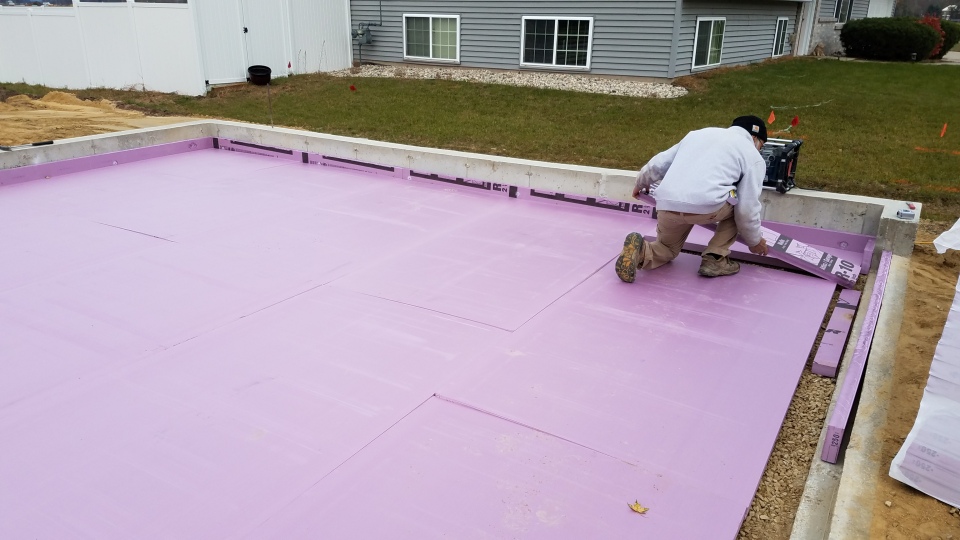
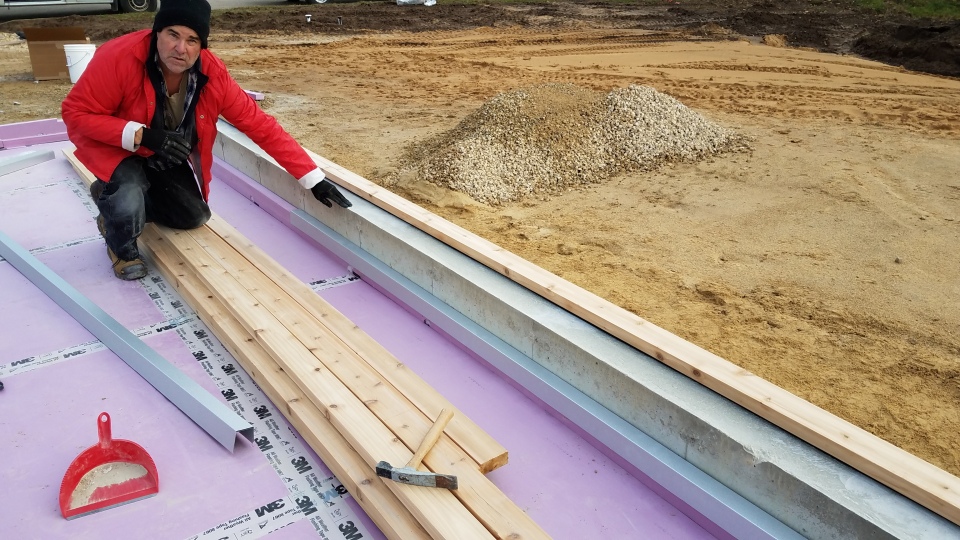
To eliminate any thermal break, we placed one layer (2” XPS) around the slab perimeter and where the future overhead door will meet the slab. To protect this vulnerable edge from damage and UV degradation, I special ordered a galvanized steel channel. The channel installed like a charm and was taped to the foam, with help from friend Marken D’elene. Here’s how that detail looks (NOTE: a future owner will need to insulate the frame wall and build a kneewall from slab to sill plate to complete the thermal envelope):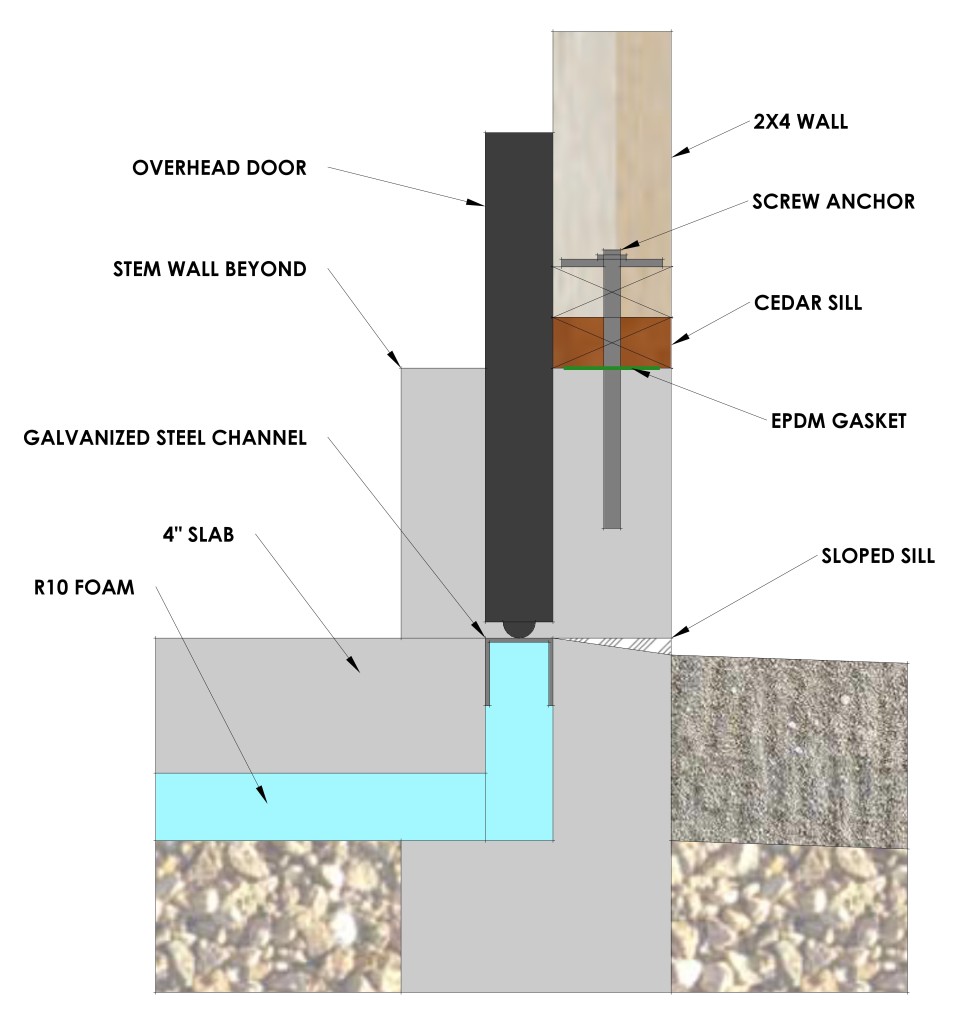
I knew I wanted a thicker layer of insulation under the house slab—but how much was enough and how much was a waste of money? Code minimum for my foundation configuration is R10, or 2”. To make an informed decision, I used an energy modeling program called REM Design.
I was surprised to learn that creating a “tray” of foam for the slab to sit in was more effective than running sheets of foam down the inside or outside of my stem walls. I also learned that increasing the thickness of the tray edge was far more effective than adding more layers of foam under the slab. The energy model gave me the heat loss for each scenario, and after I figured in material costs, I settled on an R20 edge with R20 under the slab. Here is my detail: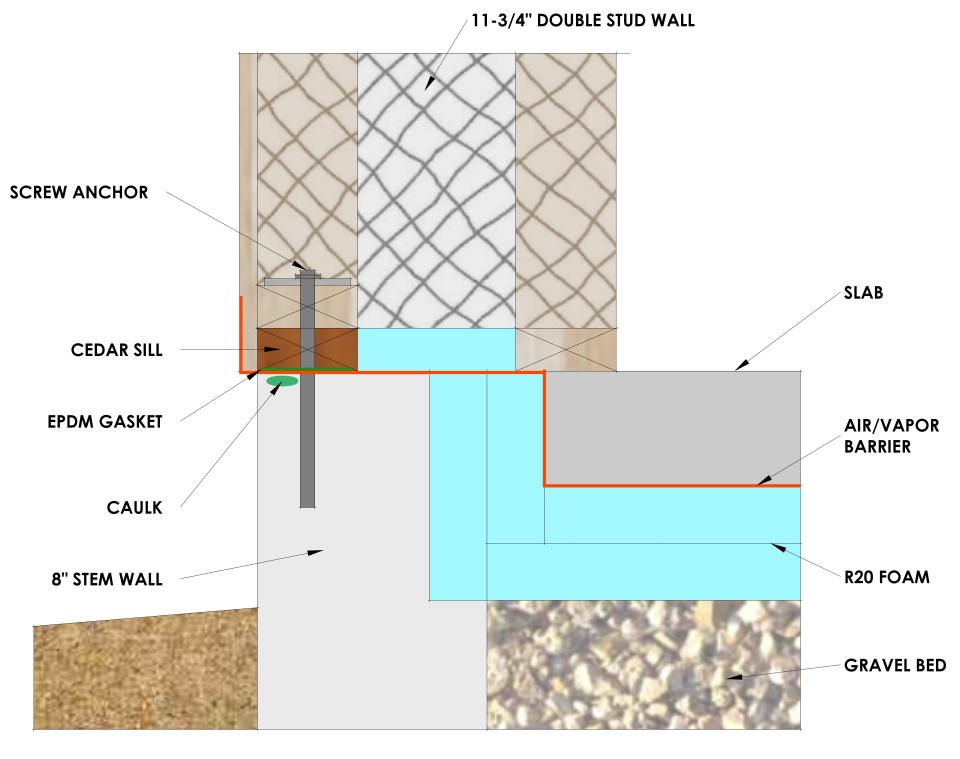
In order to minimize waste—and to avoid having extra sheets lying around the job site getting banged up—I prepared a “sheet foam cut list”. I spent a couple hours in the office with “Sketchup” drawing software, to come up with an optimal arrangement that staggered the upper and lower layers, calculated how many rips of edge foam to make, and showed where scraps could be utilized. I like to think it saved us time on-site and saved on landfill waste.
The first layer of edge foam was placed inside the concrete forms before the walls were poured. This left a 6” wide stem wall—just enough to fasten the sill plate.
It worked really well except where the skid steer continuously drove over the wall, forcing sand between the foam and the concrete. Here’s a picture of that compromised section, which we removed and replaced with a fresh rip of foam: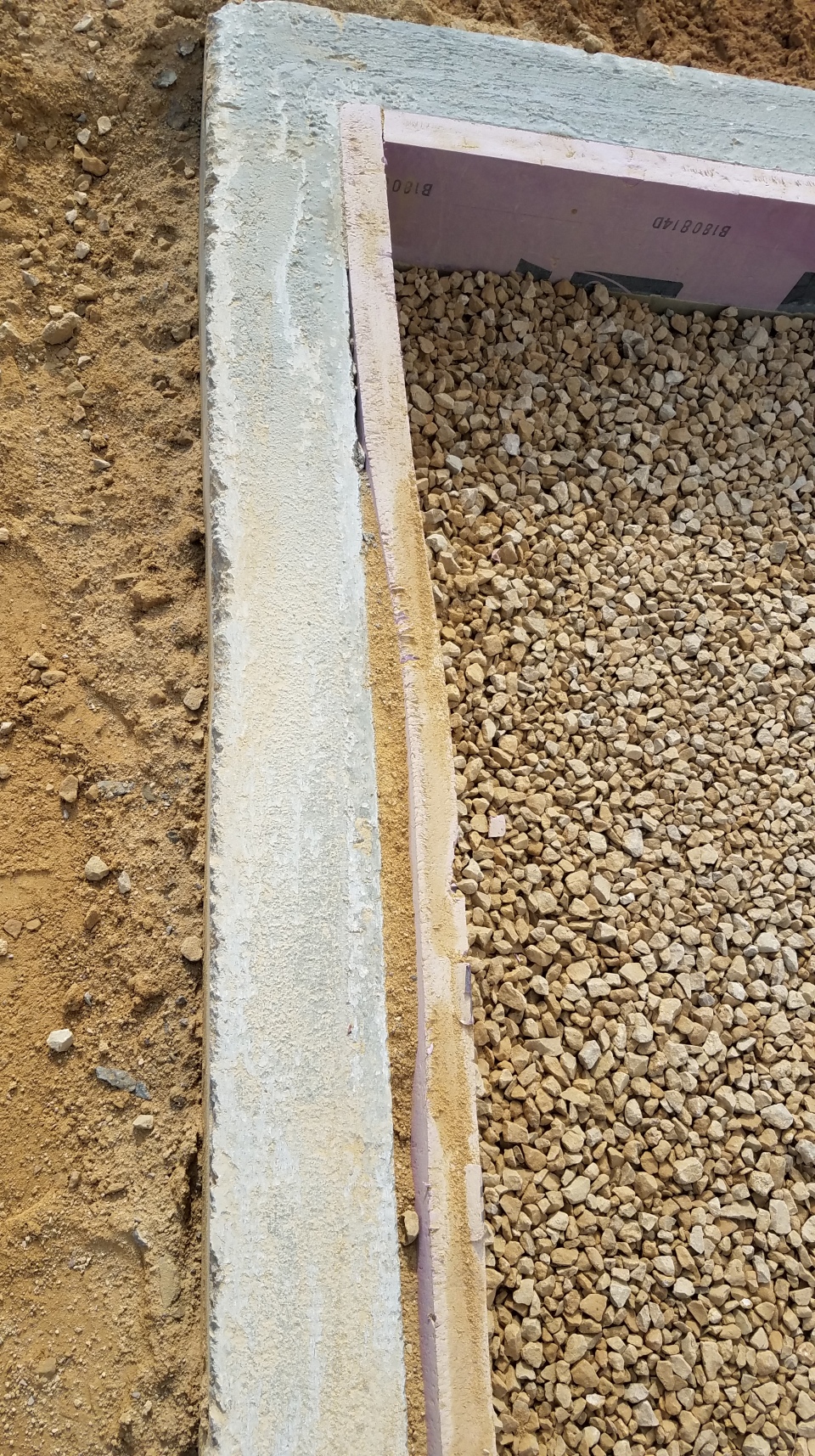
The mechanical protrusions were challenging to cut around, but a good tight fit was finally accomplished. Gaps in each layer were filled with a Green Guard Gold certified spray foam called “Handi-Foam”.
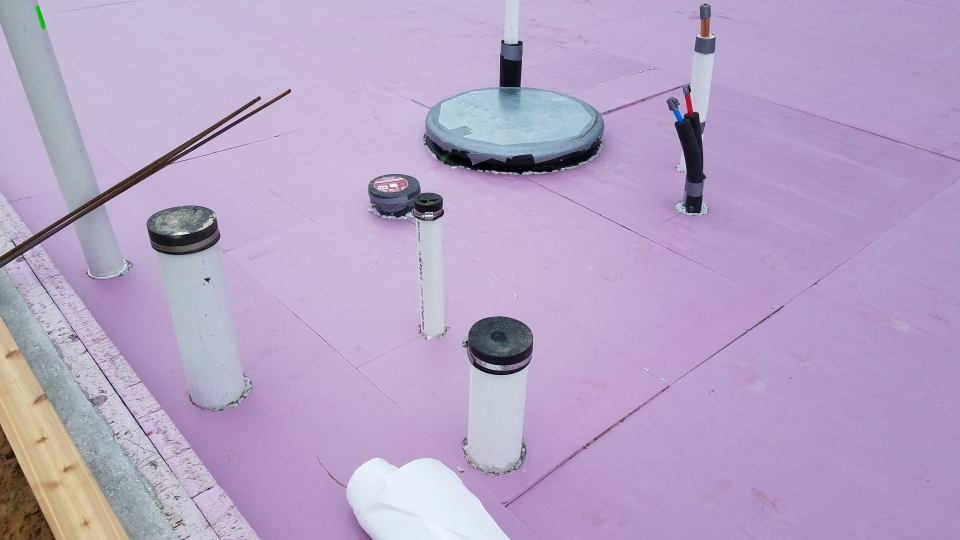
Each step of the way, I am recording not only how much material we use, but how much waste we generate. According the the University of Wisconsin Extension, construction debris make up 20-25% of Wisconsin landfills. Building an average 1500 square foot home generates 3 tons of waste (let’s assume that’s on-site). A quick internet search finds that a 20 yard, 3 ton dumpster measuring 17’x8’x5′ can be rented for $375. That’s really not a lot of money, so it’s easy to see why it’s more expedient for the average contractor to dump instead of deal with the inevitable waste generated for each task.
POEMHOMES is all about building smaller and smarter, with minimal resource expenditure. A key goal is to take the time to sort and responsibly dispose of waste. The cardboard box the Handi-Foam came in went to recycling. The 4 aerosol cans it dispensed from regrettably went to the landfill. With better planning and more finesse, I could probably cut down to 2 or 3 cans. I’ll continue to try to find a supplier who has more eco-friendly packaging or who offers a “take-back” program. I can also continue to find a better product or a better (still affordable) construction method that eliminates the need for spray foam in the first place.